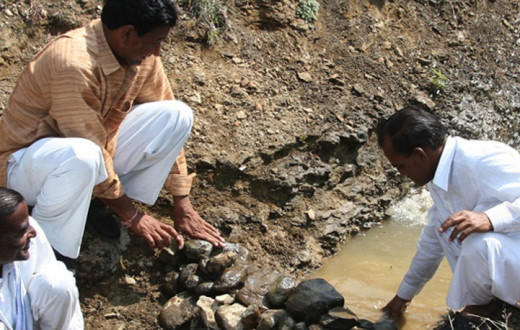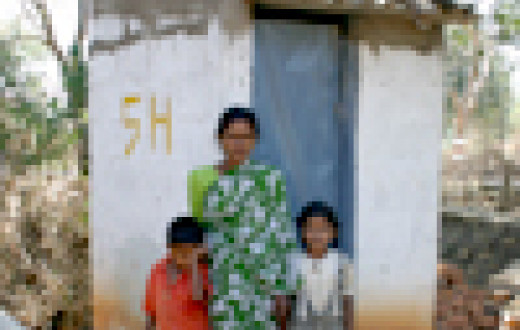Following a drastic decline in numbers of indigenous cattle breeds in India, it has become imperative to protect native breeds.
“For determining a healthy count for cows, the appropriate ratio is 20 cows per 100 people. Due to cattle not producing high milk yields, they are being slaughtered. This drops the number of cattle, affecting the genetic pool. Soon, there will be only a 5 cow ratio per 100 people. The gaushala hopes to reverse this statistic.”
~Gurudev Sri Sri Ravi Shankar
From over a hundred varieties of cows, there are now only 40 varieties remaining - most of these are on the verge of extinction. Today, finding pure bred cows is a difficult task due to extensive trans-breeding.
In an effort to preserve and protect indigenous cows, Sri Sri Gaushala has been set up at the Art of Living International Center, Bengaluru, India. A gaushala (a shelter for cows) is an integral part of the Indian society, primarily holding importance amongst the agriculture and dairy farming community.
Started with the aim to revive the gaushala system as well as preserve indigenous cattle breeds, the Sri Sri Gaushala today houses hundreds of cows of 15 different exotic breeds from across India.
The Sri Sri Gaushala is environmentally-sustainable and profitable to farmers. Each product of a gaushala is valuable and can be sold. Native breeds require a minimal amount of hay fodder, which can easily be procured from the farm as a by-product. The Art of Living’s Sri Sri Gaushala also provides a model for reviving and promoting natural farming.
Sri Sri Gaushala today houses over a hundred indigenous cows of 15 different exotic breeds.
Sl.No
| Cow Breed
| State
|
1
| Gir
| Gujarat
|
2
| Ongole
| Andhra Pradesh
|
3
| Kangayam
| Tamil Nadu
|
4
| Sahiwal
| Punjab
|
5
| Kankrej
| Gujarat
|
6
| Kasargida
| Kerala
|
7
| Dangi
| Maharashtra
|
8
| Tharparkar
| Rajasthan
|
9
| Alambadi
| Tamil Nadu
|
10
| Hallikar
| Karnataka
|
11
| Rathi
| Haryana
|
12
| Pulikulam (Jallikattu)
| Tamil Nadu
|
13
| Umbalacheri
| Tamil Nadu
|
14
| Punganur
| Andhra Pradesh
|
15
| Sahiwal
| Punjab
|
Facts about Indian cows
- Indian breeds have a large hump on top of their shoulder and neck.
- There are 40 recognized cattle breeds in India as per the National Bureau of Animal Genetic Resources (2016 report), of which some are on the verge of extinction.
- The specialty of Indian exotic breeds is that they serve multiple purposes and their characteristics make them fit for hot and local conditions. The hair, coat, pigmentation, ability to sweat, loose skin and internal body heat are the unique characteristics of Indian cattle which makes them best suited for any adverse climatic conditions.
- These cows have noteworthy pest and disease resistance power and they adjust to feed and fodder.
 Benefits of indigenous cows
Benefits of indigenous cows
- Healthy milk
Cow milk is both sattvic (of purifying quality) and nutritious. Usually, dairy milk sold at stores contains mixtures of milk from various breeds, including buffalo milk, which is high in fat content and tamasic (of lethargic quality).
Indigenous Indian cow milk contains vitamin A2, B, D, E, K, 7 types of minerals, 21 types of Amino Acid, 22 types of salt and 24 types of enzymes in an easy digestive form.
- Cow dung
For natural farming, manure is the best fertilizer containing natural pesticides. Dried dung cakes are used as fuel for cooking. Dung collected in a special vat creates biogas, which may be used to provide a stable source of electricity in villages. Fresh cow dung kills bacteria that cause malaria and TB.
- Useful urine
Distilled urine (gomutra) is a miracle medicine that cures a broad spectrum of diseases: from skin disorders to diabetes to cancer. Sri Sri Ayurveda Hospital and Sri Sri Panchakarma have demonstrated the success of gomutra in curing chronic ailments. Cow urine also contains iron, calcium, phosphorus, carbonic acid, potash, and lactose. It contains 24 types of salt and several useful medicines are made from cow urine.
The Art of Living plans to open a gaushala in each of its centers in India. As of now, there are two gaushalas – one in Bengaluru (Karnataka) and another in Vasad (Gujarat).
Story Credit: The documentation team, Art of Living Bureau of Communication
Related article:
Goshala Hub Activities | Protecting Australian Wetlands | Love’s Manger















